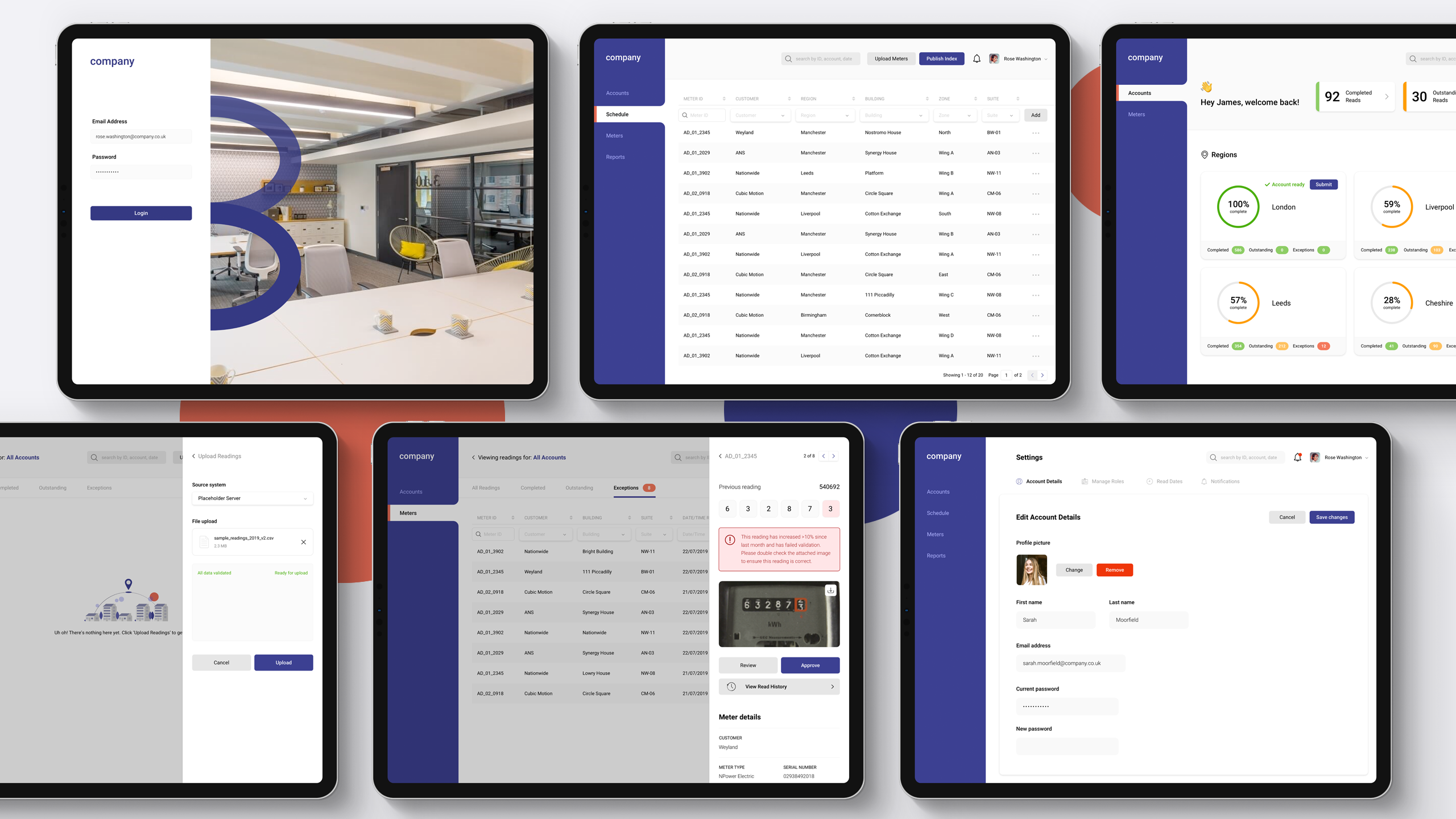The client for this project was a property specialist company based in Manchester that offers office spaces, serviced offices, retail spaces and virtual offices to rent throughout England. With a portfolio consisting of over 100 properties which are home to more than 50,000 customers, the company generates vast amounts of data that is imperative to the running and management of the aforementioned locations, particularly when it comes to billing clients for their energy consumption.
The problem
As part of the monthly energy billing cycle, hundreds of meter readings are carried out by staff via a combination of handwritten tallies and a shared spreadsheet document. Once readings are complete, the data is again handled manually when staff import these figures into a 3rd-party billing application. This lack of automation unsurprisingly leads to frequent data entry issues and puts clients at risk of being charged erroneous fees.
Another side effect of this non-automated system means that account managers have to manually handle the creation, updating, and deletion of their client’s meters, property details, and the monthly scheduling of energy readings, again using a 3rd-party spreadsheet specific to the region they administer. Senior staff are then tasked with rounding up documents from each account manager to update a central system.
The solution
With the manual handling of meter readings and quality of data verification from a vast range of sources, it became extremely clear that it was necessary to automate billing processes and aggregate all data in a single platform with the aim to eliminate inaccuracies and free-up staff resources.
By way of discovery workshops and outlining distinct user classes, two applications were to be designed: a mobile platform to ensure the integrity of meter readings, and a data management platform for account managers and senior staff to view readings/resolve any anomalies.
Using the mobile app schedule, engineers would visit each meter and snap a picture of the current reading - optical character recognition (OCR) and rigid controls to limit data entry choices ensuring higher data quality. Readings are then fed into the data management application, updating outstanding meters and populating energy consumption reports that can be generated at the end of the month. The data is then automatically checked against a number of ‘rules’ to ensure integrity, with any readings that fail this process being highlighted in a dashboard for staff to easily amend or flag for a re-read. Once all readings are ready, senior staff members are then able to verify each region’s accounts in a single area of the platform before submitting them to a separate billing application.

